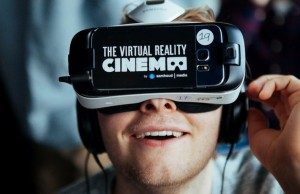
 Data Structure
Data Structure Networking
Networking RDBMS
RDBMS Operating System
Operating System Java
Java MS Excel
MS Excel iOS
iOS HTML
HTML CSS
CSS Android
Android Python
Python C Programming
C Programming C++
C++ C#
C# MongoDB
MongoDB MySQL
MySQL Javascript
Javascript PHP
PHP
- Selected Reading
- UPSC IAS Exams Notes
- Developer's Best Practices
- Questions and Answers
- Effective Resume Writing
- HR Interview Questions
- Computer Glossary
- Who is Who
Real Estate Technology Trends in 2017
Technology is pervading into all aspects of real estate, making its functioning easier and quicker. And with the rising need to manage client demands, converting leads into sales, along with the requirement for broad property research, it is becoming all the more imperative to make use of multifaceted technologies that aid in causing consequential changes in the real estate business.
Over the last few years, along with the emergence of new technologies, the existing ones have also witnessed a turnaround with added features to support the increasing requirements. These include a larger usage of precast construction, building information modeling process offering greater clarity in design, analysis, and control, 3-D laser technology for creating a digital reproduction, and Energy Modeling systems using new software such as Sefaira and Autodesk Formit for performing energy analysis.
However, the modern and emerging technologies have been creating a paradigm shift in the way realtors have started working in this industry. Here are a few trends −
Drones

One of the major changes witnessed is the usage of ‘Drones.’ These are unmanned aerial vehicles that are being used in the real estate industry for providing risk analysis and costs associated with buildings. This also provides the prospective customer an overview of the property through images and videos along with its surrounding areas and amenities.
Virtual Reality
After the gaming industry, it is the turn of real estate to venture into ‘Virtual Reality.’ People are busier and prefer to view the property from their location without having to visit personally, especially overseas. Through virtual tours or 3D experience, from any location in the world, a buyer/investor can make use of their smart phones and view the property before taking the buying decision. It serves as a great experience to view the dimensions as would be in real life. Some companies are going a step ahead to introduce interactive walk-through which allows the potential buyer to rearrange and view the space according to their desired flooring, furniture etc.
Virtual Reality Headsets

Virtual reality headsets such as Samsung Gear VR or Google Cardboard aid in taking informed decisions by walking through buildings which have not yet been built. These also include Facebook’s Oculus Rift and HTC Vive that can be paired with smartphones and enable the customer to view their homes in 360 degrees with styling options, floor plans etc. Virtual reality is contributing to the most electrifying innovations.
Big Data and Internet of Things
Big Data is everywhere. In the real estate industry, it is being used for planning and design purposes; along with providing the flexibility to test the design before it enters the construction phase. Big Data aids the real estate developers in offering similar homes with similar requirements and/or location as per the customers’ needs and messages them accordingly. With predictive analysis, realtors can segregate as per segmentation and transaction pattern, which gives them an insight into the next possible purchase.

Internet of Things (IoT) has also created an impact on real estate. Sensors are being used at residential and commercial places for managing energy and maintenance systems (giving alerts before systems break down).
Smart-Home Technology

Smart-Home technology is a major trend in the real estate industry with more people willing to invest in it for security, temperature control, monitoring and lighting reasons which can be controlled according to need and occupancy.
An example is Samsung’s SmartThings hub which can control temperature, locks, and lights from a home TV or LG’s Smart ThinQ which takes control of all of the above along with home appliances such as washing machines, ovens etc. from a smartphone or a central LCD screen.
Blockchain
Blockchain technology which uses Bitcoin, the virtual currency, is being looked at for closing any loopholes or frauds that occur in the real estate industry. This technology adds security to transactions while speeding up the process.
Beacon Technology
One of the fastest growing technologies, the Beacon technology, enables the prospective buyer to get all the updated information about the property by using an application. This information is activated as a microchip/transmitter in the ‘For Sale’ sign and is detected when the buyer uses the app.
This information reaches the realtor who can gain all the information about the prospective buyer. Further, these beacons act like guided property tours. If the buyer is near the home, they can virtually be briefed about the property via the beacon which explains important features, materials used and finishes about the home.
3D Printing
3D printing or additive manufacturing is one of the emerging technologies which is creating a storm in the real estate industry. 3D models of a part of a building are created through a printer that use a digital design from the computer. It involves lesser number of people and time to create the actual building. In commercial real estate, it implies a reduced need for warehousing, factory space and transportation.
Tastes and expectations of people are increasing with smart-homes gaining attention and momentum for buying. Technology advancements are being drilled in the real estate industry with the aforementioned trends being the real game changers. To stay in the market, embrace these changes while ensuring exceptional services at all times.

